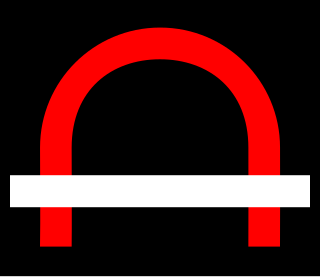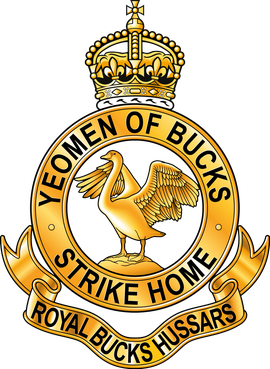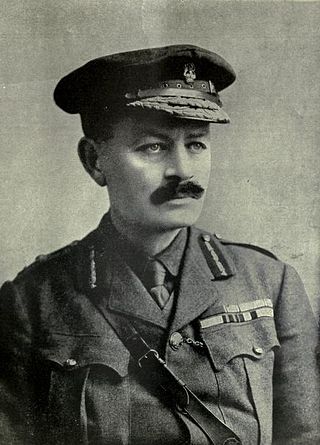
The Battle of Kasserine Pass was a series of battles of the Tunisian campaign of World War II that took place in February 1943 at Kasserine Pass, a 2-mile-wide (3.2 km) gap in the Grand Dorsal chain of the Atlas Mountains in west central Tunisia.

The 54th Infantry Division was an infantry division of the British Army. The division was raised in 1908 following the creation of the Territorial Force (TF) as the East Anglian Division. During the First World War the division fought at Gallipoli and in the Middle East. The division was disbanded after the war but reformed in the Territorial Army in 1920. During the Second World War it was a home service division and did not see any combat service abroad and was disbanded in late 1943 but many of its component units went to see service in the Normandy Campaign and North-western Europe from June 1944 to May 1945.
The South African 2nd Infantry Division was an infantry division of the army of the Union of South Africa during World War II. The division was formed on 23 October 1940 and served in the Western Desert Campaign and was captured by German and Italian forces at Tobruk on 21 June 1942. The remaining brigade was re-allocated to the South African 1st Infantry Division.

The 6th Armoured Division was an armoured division of the British Army, created in September 1940 during the Second World War and re-formed in May 1951 in the UK.

The 1st Cavalry Division was a regular Division of the British Army during the First World War where it fought on the Western Front. During the Second World War it was a first line formation, formed from Yeomanry Regiments. It fought in the Middle East before being converted to the 10th Armoured Division.
This is the order of battle for Operation Brevity, a World War II battle between the British Commonwealth and the European Axis Powers of Germany and Italy in North Africa between May 15–16, 1941.

The 57th Division was an infantry formation of the Territorial Force created in 1914 as part of the massive expansion of the British Army during the First World War. It served on the Western Front during 1917 and 1918. The divisional number was reactivated for deception purposes during the Second World War.
The Sussex Yeomanry is a yeomanry regiment of the British Army dating from 1794. It was initially formed when there was a threat of French invasion during the Napoleonic Wars. After being reformed in the Second Boer War, it served in the First World War and the Second World War, when it served in the East African Campaign and the Siege of Tobruk. The lineage is maintained by 1 Field Troop, 579 Field Squadron (EOD), part of 101 (London) Engineer Regiment (Volunteers).

The Royal Buckinghamshire Yeomanry is an Operational Hygiene Squadron of the Royal Logistic Corps, originally formed as cavalry in 1794, and has also served in artillery and signals roles. The lineage is continued by 710 Operational Hygiene Squadron, Royal Logistic Corps.

The Hampshire Yeomanry was a yeomanry cavalry regiment formed by amalgamating older units raised between 1794 and 1803 during the French Revolutionary Wars. It served in a mounted role in the Second Boer War and World War I, and in the air defence role during and after World War II. The lineage is continued by 295 Battery and 457 Battery, batteries of 106 (Yeomanry) Regiment Royal Artillery, part of the Army Reserve.

The Force in Egypt was a British Army formation established in August 1914 to administer garrisoning armed forces in Egypt at the beginning of the First World War. The force had the objective of protecting the Suez Canal and was originally commanded by Major General Julian Byng, but he was replaced by General J. Maxwell, who took command on 8 September 1914. Initially, the main threat to the Suez came from Germany and throughout the early months several of the force's elements were sent to Europe to take part in the fighting on the Western Front. On 5 November 1914, Britain and France declared war on the Ottoman Empire, after which the Force in Egypt faced a direct threat from Ottoman forces, which was realised in February 1915 with a raid on the Suez Canal. This threat remained until 1916 when the British forces went on the offensive.
6th Regiment, Royal Horse Artillery was a Regiment of the Royal Horse Artillery that acted as a training formation during World War II. It was the last RHA unit to serve in India between December 1945 and April 1947, before being redesignated as 6th Field Regiment, Royal Artillery in Palestine in 1948.
III Brigade, Royal Horse Artillery was a brigade of the Royal Horse Artillery which existed in the early part of the 20th century. It served with the 1st and 2nd Cavalry Divisions on the Western Front throughout World War I.
2nd Regiment, Royal Horse Artillery was a regiment of the Royal Horse Artillery that served in the Second World War. It saw action in France, Greece, North Africa and Italy. It was redesignated as 2nd Field Regiment, Royal Artillery in 1958.
The 289 Commando Troop originated as a parachute artillery regiment of the Territorial Army formed in London in 1956. It was transferred to the Royal Horse Artillery in 1960 and reduced to a battery in 1967. In 1977 it was re-roled as a Commando battery before being reduced to a troop in 1999. It is now based in Plymouth as a detached part of 266 Battery where they perform the same Close Support Light Gun Role as part of 104 Regiment Royal Artillery, whilst also supporting 29 Commando Regiment in an unofficial role.
T Battery Royal Artillery is an air defence battery of the Royal Artillery that serves with the British Army's 12 Regiment Royal Artillery. It is stationed at Baker Barracks, Thorney Island, West Sussex.
The Order of battle, Keren 1941 shows Italian army forces that participated in the Battle of Keren from February to March 1941 and British troops in Sudan on 20 January 1941, which participated in military operations against Eritrea during the East African Campaign 1940–1941.

The 51st Field Regiment, was a Royal Artillery unit of Britain's part-time Territorial Army (TA) formed after World War I from a Yeomanry Cavalry regiment recruited in Cumbria. One of its batteries served in the Norwegian campaign at the beginning of World War II. The regiment then sailed to the Middle East and took part in the Western Desert campaign, including the Siege of Tobruk and Operation Crusader. It was next transferred to Ceylon and later formed a Chindit column in the Burma Campaign. The regiment continued in the postwar TA until 1961.









